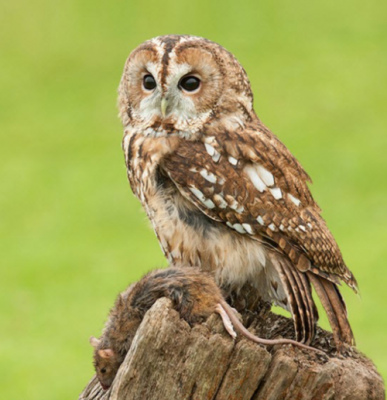
The tawny owl, or Strix aluco, is a medium-sized owl which belongs to the family Strigidae. This owl is found in woodlands across Eurasia and North Africa. It is sometimes called the brown owl because of its colouring, which is brown and sometimes gray. Its underparts are pale with dark streaks and it has a large, roundish head with dark eyes. Ear tufts are absent but it has exceptional hearing due to a symmetric ears. In fact, this owl’s hearing is 10 times better than a human’s! Often it uses only its ears while hunting at night.
This owl is non-migratory and fiercely territorial. So much so, that if a young owl fails to find a vacant territory within its home range, it will rather starve to death than move away! The tawny owl has the most iconic owl call or whistle. Its plaintive ‘Tu-whit tu-whoo’ has been immortalized in literature and films, as the quintessential owl cry.
It eats worms, insects, small mammals, reptiles, amphibians, fish and smaller birds. It usually creeps up on its prey with silent wings while the hapless victim is perched in a tree sleeping, or moving on the ground.
The tawny owl nests in tree holes, old magpie nests and cavities in buildings. The female typically lays around 2 to 3 glossy, white eggs which she incubates over a period of 30 days. Both parents look after the chicks for 2 to 3 months even after they have learnt how to fly. This species is very aggressive when defending their young. It will attack any intruder by striking them with its sharp talons. Because its flight is silent, it may not be detected until it is too late to avoid the danger. Dogs, cats and humans have been assaulted by them, sometimes without provocation.
The tawny owl is categorized under ‘Least Concern’ in the IUCN Red List, due to its stable population and wide range.
Picture Credit : Google




